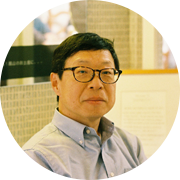
Michael is very active and crazy about soccer.
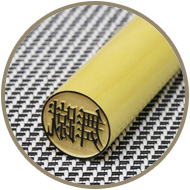
Round hanko stamps are available from JPY 3,900. You can have a case included for your hanko from JPY 5,000.
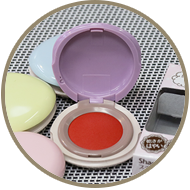
If you visit our shop and order a hanko stamp, we will include the ink pad for free.

Mai means Japanese
traditional dancing,
and it means
dancing in general
as well.

Keru means to
"kick" or "shoot".
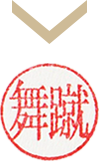
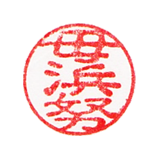
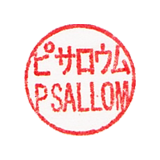
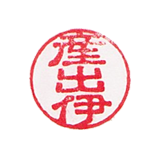
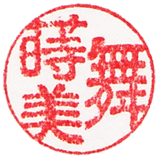
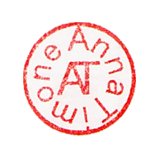
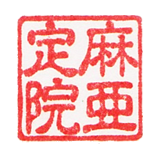
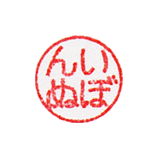
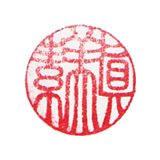
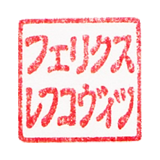
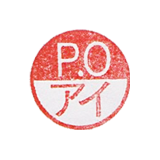
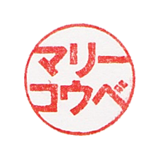
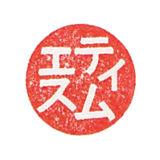
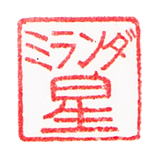
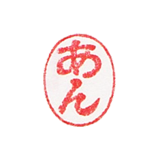
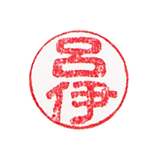
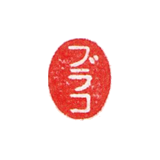

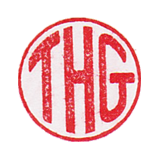
Hiragana is a phonetic alphabet representing 50 Japanese sounds. It was created based on shapes used in the cursive-style writing of kanji. Because it is the most basic form of written language in Japanese sentences, it is the first thing taught to children at school.
Katakana is another alphabet of 50 Japanese syllables, similar to Hiragana. Parts of Kanji were used to represent Japanese sounds, and then Katakana was completed by consolidating that with other original ideas. It is mainly used to represent words imported from foreign countries.
Kanji are ideogram-like characters that originated in ancient China. They spread from China to the surrounding areas in ancient times and helped to form the writing culture in East Asia. In modern times they are used for Chinese, Japanese, and Korean writing, but in each language the way to read them is sometimes quite different.
Romaji is also used in the Japanese language. It is used to express Japanese pronunciation easily for people who can't read the other written languages.
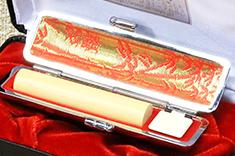
Tsuge (Buxus microphylla var. japonica) is the most widely used material for hanko stamps. Tsuge grows slowly, so the fiber is dense, hard and sticky. Owing to the warm texture and beautiful wood grain patterns, hanko made from tsuge have been popular since ancient times. Japanese tsuge producers carefully protect the environment by repeating a cycle of cutting the trees and then planting new trees. Please gently wipe the hanko with a soft cloth etc. after using it. Tsuge hanko stamps have a more subdued and nicer appearance as they are continued to be used.
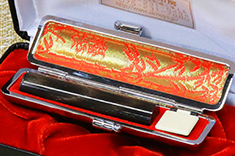
Southeast Asian water buffalo horns are also used for hanko. Water buffalo horns can be easily carved, and their price is reasonable, so it is popular for both corporate use and individual use. If you carefully wipe the red ink off after using it, you can keep the hanko's beautiful shining black color forever. Our shop can also provide black buffalo stamps with beautiful zirconia jewelry decorations.
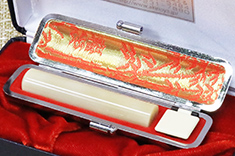
Cow's horns originating from Australia, South America, and South Africa are also used. They used to be called Dutch buffaloes. In Japan's period of isolation, Japanese people were allowed to conduct trade only with the Qing (China) and the Netherlands, so foreign products were called "Oranda (Holland)". The horn is usually white with brown stripes, and have a moderate price. However, some horns are very white and without stripes. These rare horns are called "fine white" and are considered high quality.
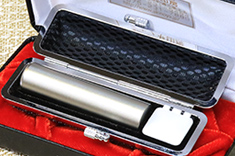
Titanium is three times as strong as aluminum, and also stronger than iron and stainless steel. It is resistant to heat and does not cause allergies to human bodies. There are a variety of designs such as those with mirror polished surfaces or those decorated with jewelry stones. For titanium hanko stamps, please wait about a week for completion. The hanko is carved with a specially dedicated machine.
In Japan, not only receiveng packeges but also signning important contracts, people seal on thier own hanko. Japanese are often gifted newly made hanko as memory of graduation from parents.
Kyoto was once the capital of Japan. Even now, it is a central place for academics, arts and traditional crafts. Historic sites, such as shrines and temples, annual events, including festivals, and cultural events such as tea ceremony and flower arrangement have flourished here. Together with the beautiful townscape, Kyoto attracts many tourists from all over the world. KYO - INSHO is one of the typical traditional crafts of Kyoto.
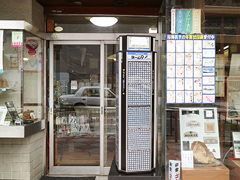
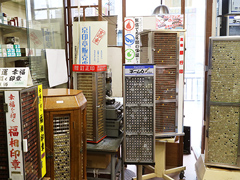
Company : Akinoya Hanko Co., Ltd.
Postal code : 604-8005
Address: 439 Ebisu-cho Sanjo-agaru, Kawaramachi-dori, Nakagyo-ku, Kyoto City JAPAN
Tel : 075-231-5484075-231-5484
Fax : 075-231-7880




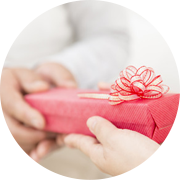
They make nice gifts for your family members,
especially for your partner.

They can be used on postcards,
message notes, or letters.
You can contact us in English.
We are happy to assist you in English.
We can also give you information about Kyoto if you need it.
Enjoy your time in Kyoto!
